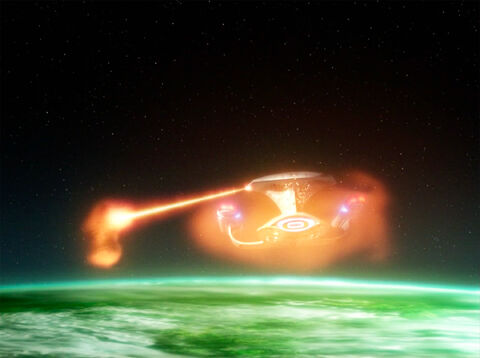I like the idea of phaser array length correlating to firepower the most.
It makes sense for the biggest, least maneuverable ships to have powerful weapons which can fire in all directions. That's why the Galaxy class has these long arrays while other, more maneuverable ships have shorter ones. They can maneuver to bring all their main phaser arrays into line and fire them simulaneously. Why don't they have long ones too? Maybe the longer the arrays are, the lower their efficiency is. But the ability to combine the firepower of many hundreds of phaser emitters and fire that in all directions makes up for this on large sluggish vessels.
If it would be about firing arcs, you could just place 10 or so of the shortest possible arrays around the saucer. And the old ball-turret emitters should already have a decent firing arc, so replacing them with a strip that's hundreds of metres long doesn't make much sense.
Redundancy could be the reason, but aren't 930 emitter segments (that's the number Graham Kennedy counted for the Galaxy's dorsal saucer array) a bit of an overkill? Also, did the phasers fail even once because of damage to a phaser array in any episode? If the answer is no, then it's not only to much redundancy, but it is also not working (or not needed, because it's always other stuff which is hit and lets the phasers fail).
As for why the longest array is not used most, maybe it's because they fire the phasers only rarely on maximum power, so the shorter array could be used instead.
As for the longest array not doing the most damage:
@blssdwlf: Which episode do you think of? Q Who? That's the only one I can think of at the time where that happened, and there they wanted to hit the tractor beam emitter on the the borg cube but missed it by hundreds of metres if I remember correctly, so who knows what went wrong there. Maybe a problem with the targeting system, which assigned the (wrong) target to the only phaser array which could hit that target at the time.
Also the first phaser discharge that did the most damage was longer than the two others. And it could also be that the two large arrays share their power, so when the ventral one used up most of it, the dorsal one had almost nothing left.
There are a few alternatives for this whole issue I can think of. Phaser array length could correlate to accuracy, recharge time and/or cooldown time.
Accuracy would be the best one of them in my opinion. An efficient and sophisticated ship like the Galaxy class has very accurate weapons, her battle section and the ships more built toward raw firepower have less accurate ones. Ships with long arrays would be the snipers and ships with short arrays would be the machine guns.
On the other hand I simply don't like the idea of very short arrays being as powerful as very long ones. Seems odd.
But maybe it's just that I think too much in simple terms of "bigger=better".



